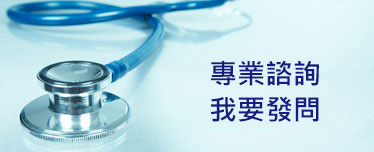感染因子
人類乳突病毒(Human Papillomavirus,簡稱 HPV)疫苗
什麼是HPV疫苗?
HPV 疫苗可以防止感染人類乳突病毒(簡稱:HPV)。HPV 是指一組超過200多種的相關病毒, 其中40多種通過直接性接觸傳染, 在這些當中有兩種HPV類型會引起生殖器疣, 而有10幾種HPV 類型可能會導致某些類型的癌症- 子宮頸癌、肛門癌、咽喉癌、 陰莖癌、外陰癌、和陰道癌。
有三種預防HPV感染致病的疫苗已經在美國獲得許可: 分別是加衛苗(Gardasil)、 9合1加衛苗(Gardasil 9) 、 和保蓓(Cervarix)。自從2016年以來, 9合1加衛苗(Gardasil 9) 一直是美國唯一使用的HPV 疫苗, 它可以預防以下九種HPV 類型的感染:
- HPV 6 型和11型, 它們導致90%的生殖器疣 (1)
- HPV 16 型和18型, 這兩種是高危險型會導致約70%的子宫頸癌, 而且會導致其他因HPV造成的癌症發生機率更高 (2-4)
- HPV 31、 33、 45、 52和58型, 是高危險HPV類型, 會導致10%-20%的子宮頸癌
保蓓疫苗(Cervarix)可預防HPV16和18類型的感染,加衛苗(Gardasil)可以預防HPV6、 11、16、和18類型的感染,這兩種疫苗也在其他一些的國家中使用。
誰應該接種HPV疫苗?
美國疾病控制與預防中心(CDC)免疫實行諮詢委員會(ACIP)制定美國所有疫苗接種的相關建議, 包括HPV疫苗的接種。目前ACIP對HPV 疫苗接種的建議有(5):
- 9至26歲的兒童和成人。通常建議在11或12歲時接種HPV 疫苗,最早可以在9歲時開始接種疫苗, 建議所有26歲前還未接種疫苗的人儘早接種HPV 疫苗。
- 27歲至45歲的成年人。雖然HPV疫苗已經獲得美國食品和藥物管理局(FDA)的批准,可在45歳以前接種。但是不建議所有27至45歳的成人都接種HPV疫苗。然而, ACIP建議臨床醫師與這個年齡組且未適當接種疫苗的病人討論HPV疫苗的接種是否適合他們,在這個年齡範圍接種HPV疫苗的好處較少,因為這個年齡層的人,可能很多都已經接觸過這種病毒了。
- 懷孕的人。HPV疫苗的接種應該推遲到懷孕結束之後。但接種疫苗前不需要進行妊娠測試,沒有證據顯示接種疫苗會影響懷孕或傷害胎兒。
需要接種多少劑HPV疫苗?
HPV疫苗是以幾劑注射的方式。根據接種者開始接種疫苗的年齡的不同 (6),ACIP 會指定不同的藥劑方案。15 歲以前接種的孩童只需要接種兩劑,就能得到充分的保護, 15歲以後才開始接種的人, 以及患有免疫系統低弱疾病的人需要接種三劑才能得到充分的保護。
研究人員目前正在研究單劑量的HPV疫苗是否有效。
HPV疫苗的效果如何?
臨床試驗證明,如果在首次接觸到病毒之前(就是在個人開始有性活動之前)接種HPV疫苗,可以非常有效的預防子宫頸感染相關的HPV類型病毒。 試驗結果還發現HPV疫苗可以減低HPV病毒感染其他部位的組織, 包括肛門(7) 和口腔區域(8,9)。
由於HPV病毒引起的細胞病變和癌症需要數年才會發生,因此最近才證實疫苗也能降低發生這些結果的風險,根據臨床試驗和人口研究的實際數據已經證明,疫苗大大降低已接種的女性發生癌前病變與子宮頸癌、陰道癌、和外陰癌的風險 (10-13)。 針對接種加衛疫苗(Gardasil)男性的臨床實驗顯示,它可以預防持續感染所引起的肛門細胞病變(14)。在審核批准9合1加衛疫苗(Gardsail 9)的試驗中發現, 這個疫苗在預防所有7種HPV致癌病毒類型(16、18、31、33、45、 52、和58) 引起的子宮頸癌,外陰癌和陰道癌的效果幾乎是100% (10)。
雖然保蓓(Cervarix)和加衛(Gardasil)疫苗僅預防兩種高危險的HPV類型,HPV16和HPV18,但這兩種HPV類型是導致大多數癌症的原因。在一份2017年發表的立場書中,世界衛生組織表示HPV疫苗具有相當的功效(15)。 此外, 保蓓疫苗也發現可以針對其他致癌HPV病毒提供實質性的保護,這種現象稱為交互保護 (16)。已經接種三劑保蓓(Cervarix)的女性對31、33、 45類型的HPV新型感染有很強的保護作用。
至今為止,已經發現加衛(Gardasil)對其鎖定的HPV病毒類型的感染保護可以持續至少10年。保蓓(Cervarix)疫苗可長達11年, 9合1加衛(Gardasil 9)疫苗至少可以維持6 年(19),正在進行中針對疫苗功效的長期研究可以幫助科學家更多的了解保護時期可以持續多久。
HPV疫苗如何產生作用?
就像其他預防病毒感染的免疫作用一樣,HPV疫苗會刺激身體產生抗體,這些抗體在未來遇到HPV時會與病毒結合,並防止病毒感染細胞。
目前的HPV疫苗是基於HPV表面成分形成的類病毒顆粒(VLPs)。VLPs 不會傳染,因為它們沒有病毒的DNA。然而,它們與天然病毒非常相似,並且針對VLP的抗體對天然病毒也具有效用。研究發現VLP具有很強的免疫原性, 這意味著它們會促使身體產生高程度的抗體,讓疫苗非常有效。
這些疫苗不能預防其他的性傳染疾病,也不能治療現有的HPV感染或HPV引起的疾病。
為什麼接種HPV疫苗很重要?
HPV疫苗和子宫頸篩檢一起配合可以最有效的預防子宫頸癌。此外,接種HPV 疫苗可以降低HPV在子宫頸以外其他部位引起癌症的風險。接種疫苗不僅可以保護個人感染某些疫苗設定的HPV病毒類型 (而且也可能可以預防其他類型,取決於交互保護的程度),也可以降低這些病毒類型的流行,因此降低沒有接種疫苗者感染病毒的可能性(這種現象稱為群體保護或群體免疫)。例如,在澳洲, 接種加衛疫苗(Gardasil) 的女性比率很高,在疫苗接種計劃的4年裡,年輕男性(當時未接種疫苗)和年輕女性患得生殖器疣的比率下降 (21)。
大規模HPV疫苗接種計劃可以為未接種疫苗的個人提供保護,這樣的聲明在一項2019年對14個高收入國家僅針對女性的HPV疫苗接種計劃統合分析中再一次被證實,接種人數包括6000萬位女性 (22)。該分析顯示,疫苗接種開始的8 年期間,與疫苗接種前比較,25-29 歳女性罹患肛門生殖器疣的診斷率下降31%,15-19歳的男性下降了48%,20-24 歲的男性下降了32%。
同樣,在一項針對美國一個地區20-29歲女性的研究發現,在接種疫苗後的10年內,疫苗所鎖定的HPV病毒類型在接種和未接種疫苗的女性中的流行機率都降低,提供了直接保護和群體保護的證據(23)。
廣泛接種HPV疫苗可能可以將世界各地子宫頸癌的發生率大大降低90% (16, 19)。此外,疫苗可以減少蒒檢和後續醫療照顧、切片檢查、和子宫頸異常所需相關侵入性檢查的需要,因此可減少後續檢查所產生的醫療成本和焦慮的情緒(24) 。
美國子宫頸癌發病率下降,主要是由於子宫頸癌的篩檢,而HPV相關的口咽癌、外陰癌、和肛門癌的病例一直在增加。事實上,2012-2016 的資料發現,美國HPV導致的口咽癌多於子宫頸癌(2),因為沒有針對非子宫頸癌的正式篩檢計劃案,所以普遍性接種HPV 疫苗可能可以對大眾健康有很大的影響。
HPV 疫苗安全嗎?
安全的。超過12年的安全監測顯示,這些疫苗沒有嚴重的副作用。最常見的問題是注射部位有短暫的酸痛和其他局部的症狀,這些副作用和其他疫苗的副作用問題相似。
在授權疫苗時,FDA和CDC進行一項對加衛疫苗(Gardasil)副作用的安全審查,相關不良的副作用都已經呈報至疫苗不良副作用報告系統(26- 28)。不良副作用的發生率和在疫苗獲得批准前所進行的安全性報告中的結果一致,而且與其他疫苗的報告也一致,HPV疫苗最新的安全審查數據持續顯示這些疫苗是安全的(29, 30)。
與其他疫苗一樣,接種加衛(Gardasil)有時會感到暈眩,暈眩後跌倒有時候可能造成嚴重傷害,例如頭部受傷。因此透過讓接種者在疫苗接種後持續坐著至15分鐘,可以大大的預防因暈眩跌到受傷的問題。FDA和CDC已經提醒醫療保健的提供者,為了防止跌倒和受傷,所有疫苗的接種者在接種後都應保持坐姿或躺下,並接受15分鐘密切觀察。
是否應該給已經感染HPV或子宫頸細胞病變的人接種HPV疫苗?
ACIP建議已經感染HPV和/或子宫頸抺片檢查結果異常的人,如果他們處於適當的年齡層(9-26歲),仍應接種HPV疫苗,因為疫苗可以保護他們預防感染其他高危險的HPV類型。然而,應該告知這些人接種疫苗不會治癒他們目前HPV的感染,或治療他們抺片檢查的異常結果(31)。
雖然HPV疫苗接種對已感染HPV的人是安全的,但是如果能夠在性行為之前就接種疫苗,所得到的益處是最大的(32, 33)。
之前感染過HPV的人仍然可能從疫苗接種中獲得一些剩餘的好處,即使他或她已經感染了疫苗中包含的一種或多種的HPV類型。
接種過HPV疫苗的女性還需要子宫頸癌篩檢嗎?
是的還需要。由於HPV疫苗不能預防所有可能導致癌症的HPV病毒類型,因此建議已經接種疫苗的女性與未接種疫苗的女性遵循相同的篩檢建議,未來對已經接種疫苗的女性可能會有不同的篩檢建議。
HPV疫苗接種的費用是多少, 保險會支付嗎?
在台灣根據衛生福利部公告資訊HPV疫苗價位:每劑疫苗市價約3000-5000元。
另外也有疫苗補助:政府有提供公費施打對象,非補助對象或不想施打公費補助疫苗,可選擇至有提供HPV疫苗接種的醫療院所自費接種。
資料來源: 衛生福利部-HPV疫苗懶人包(2020/05/28)
針對預防HPV感染的策略研究有哪些?
如果只施打單劑的HPV疫苗就能有效,那將是一個重要的進步。一項使用澳洲全國女性數據的大型觀察研究發現,接種一劑HPV疫苗在預防高程度子宫頸病變與接種兩劑或三劑是一樣有效(34)。在哥斯大黎加一個社區的保蓓(Cervarix)臨床試驗數據分析中發現,即使接種一劑疫苗,它能促使身體產生的抗體,比人體感染HPV自然產生的抗體多9倍,而且這些抗體程度可以維持11年之久(35)。此外,至少10年內可以維持相當低的HPV感染率(35)。
在哥斯大黎加進行的兩項由NCI主導的臨床試驗已經證實和擴大這些發現,在ESCUDDO 研究採取隨機雙盲對照試驗方式,20,000 名年齡在2-16的女孩為樣本,測試一劑保蓓疫苗(Cervarix)或9合1加衛疫苗(Gardasil 9) 在預防子宫頸持續感染HPV的效果,是否與接種兩劑一樣有效。PRIMAVERA-ESCUDDO是一項非隨機開放式的試驗,向ESCUDDO提供於9-14歲女性接種一劑保蓓(Cervarix)和18-25歲女性接種三劑加衛(Gardasil)比較其免疫原性的資料與相互結果。
另一項正在研發的預防方法是以外用的方式使用殺菌劑,卡拉膠(Carrageenan)是一種從海藻中提取的化合物,它也被廣泛用於食品和其他產品,在實驗室的研究中發現它可以抑制HPV感染。一項隨機臨床試驗數據的期間分析顯示,持續使用含有卡拉膠的潤滑凝膠可以降低健康女性感染生殖器官HPV的風險(36)。
研究人員正在研發有治療性的HPV疫苗,這種疫苗不是預防感染HPV,而是預防先前感染HPV的女性罹患癌症(37- 40)。這些疫苗透過刺激免疫系統以殺死特定受感染的細胞,持續的臨床試驗仍在測試治療性DNA的疫苗在治療HPV相關子宫頸和外陰病變的安全性與有效性。
閱讀更多關於HPV資訊,請前往衛生福利部國民健康署HPV專欄(https://www.hpa.gov.tw/Pages/List.aspx?nodeid=212) 查詢。
文獻資訊
- Koutsky LA, Ault KA, Wheeler CM, et al. A controlled trial of a human papillomavirus type 16 vaccine. New England Journal of Medicine 2002; 347(21):1645–1651.
- Senkomago V, Henley SJ, Thomas CC, e al. Human papillomavirus-attributable cancers - United States, 2012–2016. MMWR. Morbidity and Mortality Weekly Report 2019; 68(33):724–728.
- Gillison ML, Chaturvedi AK, Lowy DR. HPV prophylactic vaccines and the potential prevention of noncervical cancers in both men and women. Cancer 2008; 113(10 Suppl):3036–3046.
- Thompson-Harvey A, Yetukuri M, Hansen AR, et al. Rising incidence of late-stage head and neck cancer in the United States. Cancer 2020; 126(5):1090–1101.
- Meites E, Szilagyi PG, Chesson HW, et al. Human papillomavirus vaccination for adults: Updated recommendations of the Advisory Committee on Immunization Practices. MMWR Morbidity and Mortality Weekly Report 2019; 68(32):698–702.
- Meites E, Kempe A, Markowitz LE. Use of a 2-dose schedule for human papillomavirus vaccination — Updated recommendations of the Advisory Committee on Immunization Practices. MMWR Morbidity and Mortality Weekly Report 2016; 65:1405–1408.
- Kreimer AR, Gonzalez P, Katki H, et al. Efficacy of a bivalent HPV 16/18 vaccine against anal HPV 16/18 infection among young women: A nested analysis within the Costa Rica Vaccine Trial. Lancet Oncology 2011; 12(9):862–870.
- Herrero R, Quint W, Hildesheim A, et al. Reduced prevalence of oral human papillomavirus (HPV) 4 years after bivalent HPV vaccination in a randomized clinical trial in Costa Rica. PLoS One 2013; 8(7):e68329.
- Chaturvedi AK, Graubard BI, Broutian T, et al. Effect of prophylactic human papillomavirus (HPV) vaccination on oral HPV infections among young adults in the United States. Journal of Clinical Oncology 2018; 36(3):262–267.
- Chatterjee A. The next generation of HPV vaccines: Nonavalent vaccine V503 on the horizon. Expert Review of Vaccines 2014; 13(11):1279–1290.
- Dehlendorff C, Baandrup L, Kjaer SK. Real-world effectiveness of human papillomavirus vaccination against vulvovaginal high-grade precancerous lesions and cancers. Journal of the National Cancer Institute 2020:djaa209。 doi: 10. 1093/jnci/djaa209.
- Lei J, Ploner A, Elfström KM, et al. HPV vaccination and the risk of invasive cervical cancer. New England Journal of Medicine 2020; 383(14):1340–1348.
- Mix JM, Van Dyne EA, Saraiya M, Hallowell BD, Thomas CC. Assessing impact of HPV vaccination on cervical cancer incidence among women aged 15–29 years in the United States, 1999–2017: An ecologic study. Cancer epidemiology, biomarkers & prevention 2021; 30(1):30–37.
- Giuliano AR, Palefsky JM, Goldstone S, et al. Efficacy of quadrivalent HPV vaccine against HPV infection and disease in males. New England Journal of Medicine 2011; 364(5):401–411.
- World Health Organization. Human papillomavirus vaccines: WHO position paper, May 2017-Recommendations. Vaccine 2017; 35(43):5753–5755.
- Kavanagh K, Pollock KG, Cuschieri K, et al. Changes in the prevalence of human papillomavirus following a national bivalent human papillomavirus vaccination programme in Scotland: A 7-year cross-sectional study. The Lancet. Infectious Diseases 2017; 17(12):1293–1302.
- Tsang SH, Sampson JN, Schussler J, et al。 Durability of cross-protection by different schedules of the bivalent HPV vaccine: The CVT trial。 Journal of the National Cancer Institute 2020; 112(10):1030–1037.
- Kjaer SK, Nygård M, Dillner J, et al. A 12-year follow-up on the long-term effectiveness of the quadrivalent human papillomavirus vaccine in 4 Nordic countries. Clinical Infectious Diseases 2018; 66(3):339–345.
- Huh WK, Joura EA, Giuliano AR, et al. Final efficacy, immunogenicity, and safety analyses of a nine-valent human papillomavirus vaccine in women aged 16–26 years: A randomised, double-blind trial. Lancet 2017; 390(10108):2143–2159.
- Porras C, Tsang SH, Herrero R, et al. Efficacy of the bivalent HPV vaccine against HPV 16/18-associated precancer: Long-term follow-up results from the Costa Rica Vaccine Trial. Lancet Oncology 2020; 21(12):1643–1652.
- Ali H, Guy RJ, Wand H, et al. Decline in in-patient treatments of genital warts among young Australians following the national HPV vaccination program. BMC Infectious Diseases 2013; 13:140.
- Drolet M, Bénard É, Pérez N, Brisson M; HPV Vaccination Impact Study Group. Population-level impact and herd effects following the introduction of human papillomavirus vaccination programmes: Updated systematic review and meta-analysis. Lancet 2019; 394(10197):497–509.
- Markowitz LE, Naleway AL, Lewis RM, et al. Declines in HPV vaccine type prevalence in women screened for cervical cancer in the United States: Evidence of direct and herd effects of vaccination. Vaccine 2019; 37(29):3918–3924.
- Steinbrook R. The potential of human papillomavirus vaccines. New England Journal of Medicine 2006; 354(11):1109–1112.
- Van Dyne EA, Henley SJ, Saraiya M, et al. Trends in human papillomavirus-associated cancers - United States, 1999–2015. MMWR Morbidity and Mortality Weekly Report 2018; 67(33):918–924.
- Gee J, Naleway A, Shui I, et al. Monitoring the safety of quadrivalent human papillomavirus vaccine: Findings from the Vaccine Safety Datalink. Vaccine 2011; 29(46):8279–8284.
- Arnheim-Dahlström L, Pasternak B, Svanström H, Sparén P, Hviid A. Autoimmune, neurological, and venous thromboembolic adverse events after immunisation of adolescent girls with quadrivalent human papillomavirus vaccine in Denmark and Sweden: Cohort study. British Medical Journal 2013; 347:f5906.
- Stokley S, Jeyarajah J, Yankey D, et al. Human papillomavirus vaccination coverage among adolescents, 2007–2013, and postlicensure vaccine safety monitoring, 2006–2014--United States. MMWR Morbidity and Mortality Weekly Report 2014; 63(29):620–624.
- Arana JE, Harrington T, Cano M, et al. Post-licensure safety monitoring of quadrivalent human papillomavirus vaccine in the Vaccine Adverse Event Reporting System (VAERS), 2009–2015. Vaccine 2018; 36(13):1781–1788.
- Shimabukuro TT, Su JR, Marquez PL, et al. Safety of the 9-valent human papillomavirus vaccine. Pediatrics 2019; 144(6):e20191791.
- Markowitz LE, Dunne EF, Saraiya M, et al. Human papillomavirus vaccination: Recommendations of the Advisory Committee on Immunization Practices (ACIP). Morbidity and Mortality Weekly Report 2014; 63(RR-05):1–30.
- Hildesheim A, Herrero R, Wacholder S, et al. Effect of human papillomavirus 16/18 L1 viruslike particle vaccine among young women with preexisting infection: A randomized trial. JAMA 2007; 298(7):743–753.
- Hildesheim A, Gonzalez P, Kreimer AR, et al. Impact of human papillomavirus (HPV) 16 and 18 vaccination on prevalent infections and rates of cervical lesions after excisional treatment. American Journal of Obstetrics and Gynecology 2016; 215(2):212. e1–212. e15.
- Brotherton JM, Budd A, Rompotis C, et al. Is one dose of human papillomavirus vaccine as effective as three?: A national cohort analysis. Papillomavirus Research 2019; 8:100177.
- Kreimer AR, Sampson JN, Porras C, et al. Evaluation of durability of a single dose of the bivalent HPV vaccine: The CVT trial. Journal of the National Cancer Institute 2020; 112(10):1038–1046.
- Magnan S, Tota JE, El-Zein M, et al. Efficacy of a carrageenan gel against transmission of cervical HPV (CATCH): Interim analysis of a randomized, double-blind, placebo-controlled, phase 2B trial. Clinical Microbiology and Infection 2019; 25(2):210–216.
- Hancock G, Hellner K, Dorrell L. Therapeutic HPV vaccines。 Best practice & research. Clinical obstetrics & gynaecology 2018; 47:59–72.
- Yang A, Farmer E, Wu TC, Hung CF. Perspectives for therapeutic HPV vaccine development. Journal of Biomedical Science 2016; 23(1):75.
- Trimble CL, Morrow MP, Kraynyak KA, et al. Safety, efficacy, and immunogenicity of VGX-3100, a therapeutic synthetic DNA vaccine targeting human papillomavirus 16 and 18 E6 and E7 proteins for cervical intraepithelial neoplasia 2/3: A randomized, double-blind, placebo-controlled phase 2b trial. Lancet 2015; 386(10008):2078–2088.
- Harper DM, Nieminen P, Donders G, et al. The efficacy and safety of Tipapkinogen Sovacivec therapeutic HPV vaccine in cervical intraepithelial neoplasia grades 2 and 3: Randomized controlled phase II trial with 2. 5 years of follow-up. Gynecologic Oncology 2019; 153(3):521–529.
資料來源: “Human Papillomavirus (HPV) Vaccines was originally published by the National Cancer Institute.”
大葉大學視光學系 蔡麗雲教授 協助校稿
更新日期: 2021.08.11


